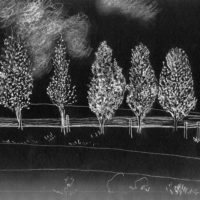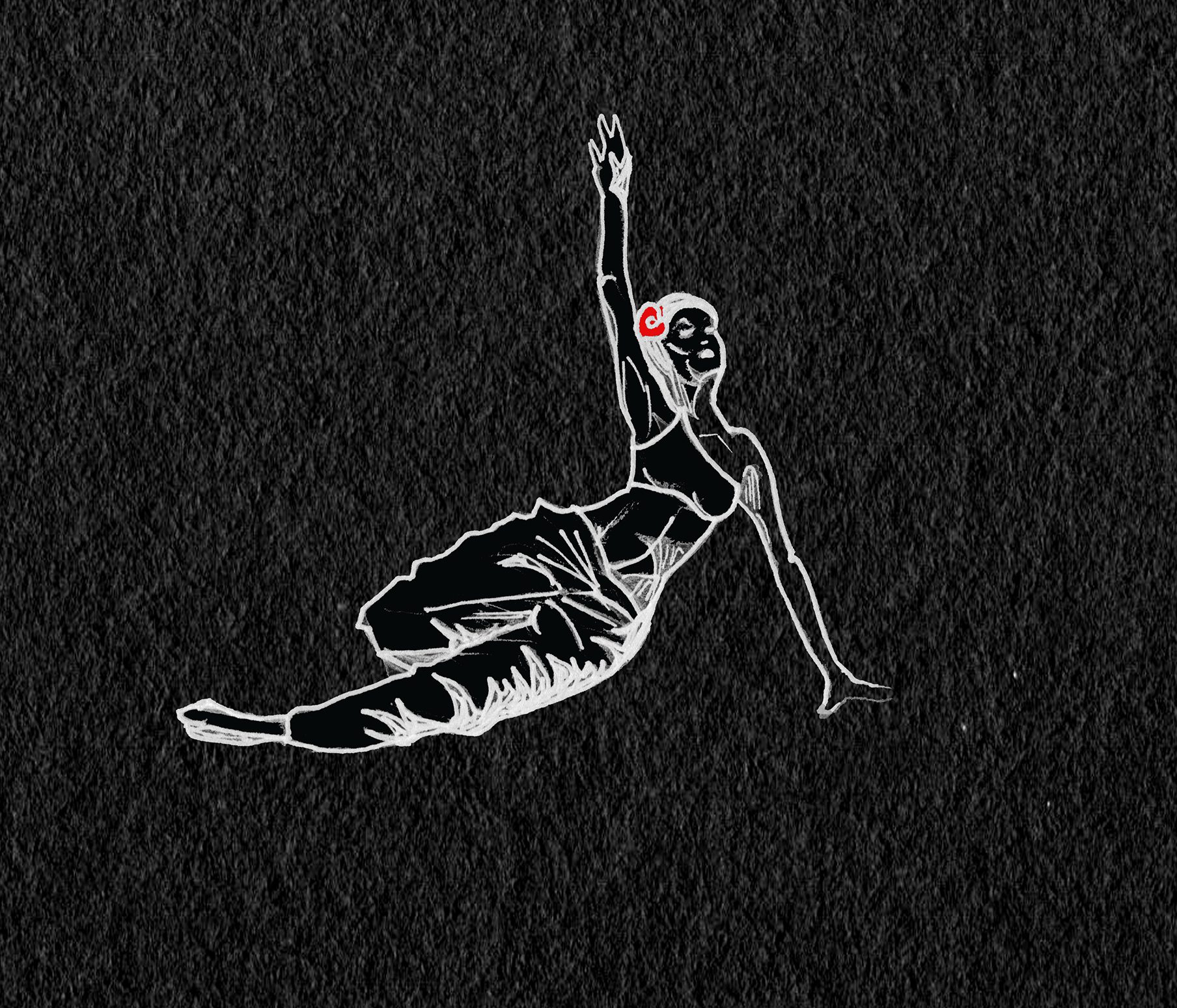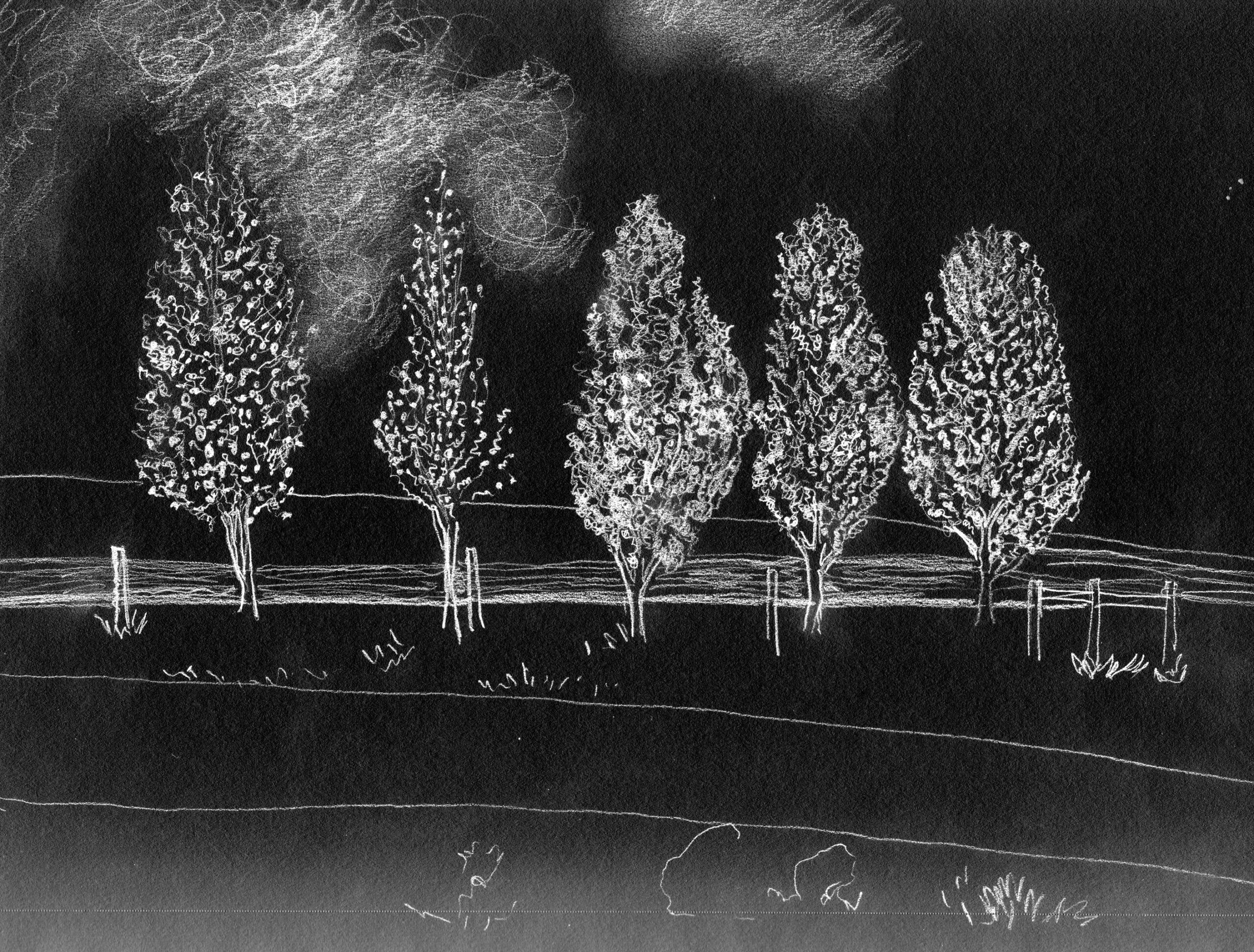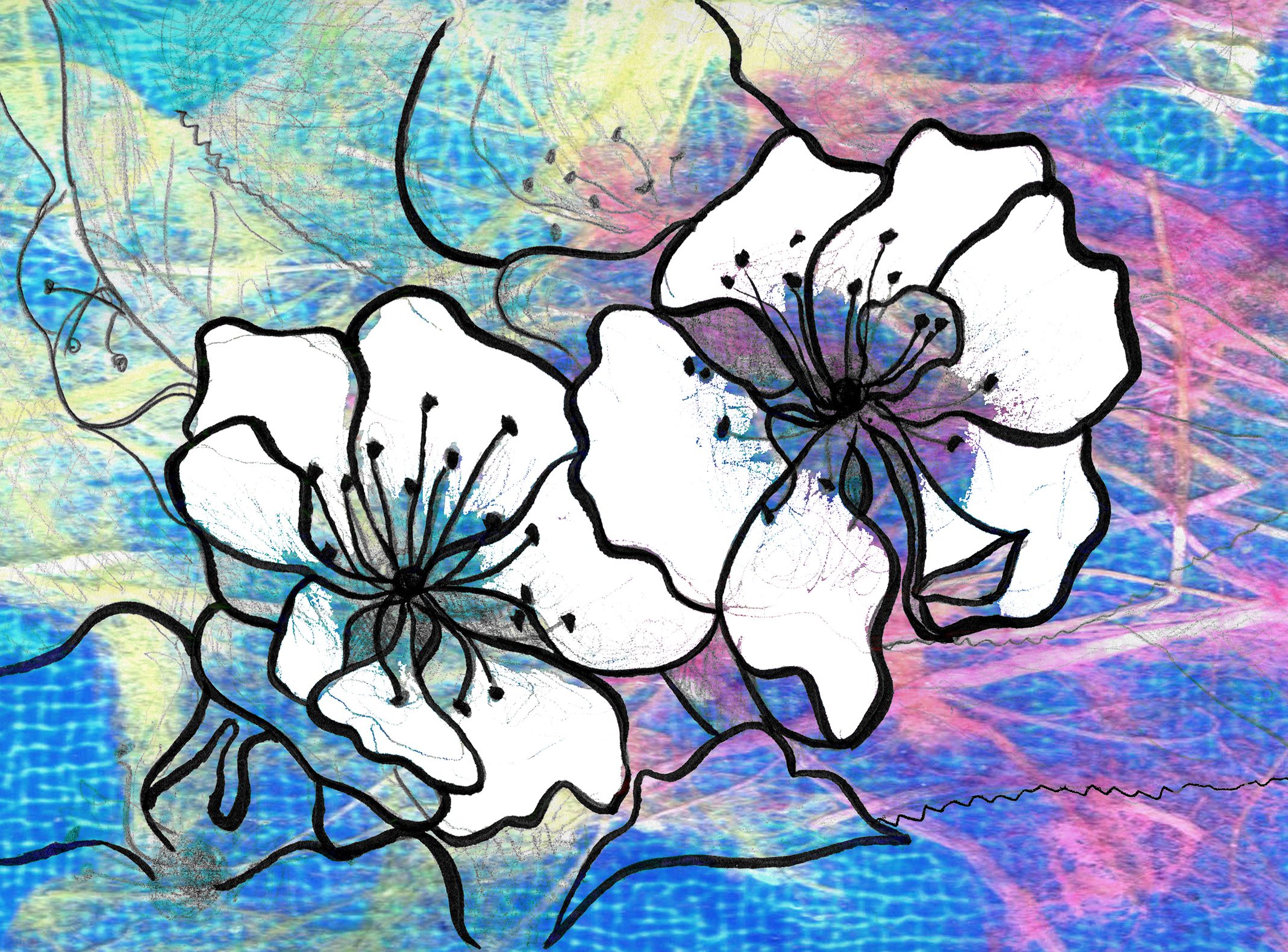Karein emails me photos of her father, Christoph (Chris) K. Goertz. He was the leading theoretical space plasma physicist shot and killed at the University of Iowa on November 1, 1991 by a twenty-eight-year-old former graduate student. These photos are for a book I’m co-editing about school shootings. There’s a part of me that doesn’t want to download them because I struggle with seeing the faces of the murdered after working so closely with the families. But I remind myself I’ve already committed to the difficult task of assembling both the living and the dead’s stories.
So I move forward. Download the attached images she’s sent me. A folder zips about ten photos, some of Chris hiking out into the wilderness, some of him lecturing to a roomful of university science students, and there’s two or three happy family photos. But this photo. This one, writes Karein. I took this photo of him two days before his murder. It was the last time I saw my father alive. I fixated on Chris’s smile. He looks visibly content, perhaps secure and settled in his life. Happy. But I force myself to stop the conjecture, and consider where to place these photos in the essay Karein and I have been editing for weeks now. But I’m hesitant to start, and delay acknowledging her email (or the next round of edits on her essay). Karein is one of the more than forty survivors I’ve been coaching to tell their story about what life looks like in the aftermath of gun violence.
The process of guiding people to speak their truths was isolating. At the end of every brainstorming session with a survivor, I felt powerless. Their family members were murdered violently and suddenly, and I questioned if this was all I could do to help. How will sharing their stories make an impact on schools safety? On gun sense legislation? On bringing awareness to the long term effects of trauma on the living? I didn’t have the right to ask. My family was still alive.
Fortunately, I didn’t have to do this work alone, and between 2017 and 2018, my co-editor, Amye, and I set out together to collect primary narratives from survivors of school shootings from the last fifty-five years. In the months before the shooting at Marjory Stoneman Douglas High School in Parkland, Florida, we discussed ideas for a new anthology. It quickly became clear that gun violence, and the those left in its wake, was of a particular interest to both of us. For Amye, Sandy Hook changed everything, as it did for many parents across the country. Her twin daughters were the same age as the children murdered on that day, and she has been advocating for change ever since. And for me, I’d been writing about trauma for years after my own experience with sexual violence. I’d been interested in how individuals recover through the use of personal story, and delivered many workshops on writing to heal.
We started our project with what we thought was a simple question: What happened to those who survived Columbine? We wondered how they moved forward, how they grew up and moved on, and what their lives looked like almost twenty years later. Then, the Parkland shooting happened, and it became clear that the intersectionality between trauma and mass shootings could no longer be ignored.
Before starting, we knew this collection process wouldn’t be easy. We did exactly what the experts advised when taking on projects that involve close contact with victims of trauma. We prepared by reducing our teaching loads, exercising more, meditating, journaling, and meeting weekly with our therapists. But despite our best efforts to safeguard ourselves from getting hurt, we did. Perhaps we were too empathetic.
We spent hundreds, if not thousands, of hours listening to accounts of families torn apart by gun violence, including how parents could only recognize their children’s faces by specific markings on their bodies when no one else could. The horror of these stories crept inside us, and for me, while different in subject matter, triggered memories of my rape. As I spoke with survivors about their experiences, my own story naturally intertwined.
When I interviewed Joe, I’d spoken to more than a dozen survivors about the deaths of their loved ones. Speaking to Joe was special, though. He was one of the first fathers I talked to about losing his daughter to gun violence. His daughter Reema was killed at Virginia Tech in 2007. Over the phone, Joe focused on Reema’s life rather than her death. She loved dance and theater, and had a passion for culture and languages like French. How did you get into this work, Joe asked. Now I faced my own silence.
I started having more interest in trauma after I was raped. I channeled my suffering into storytelling, which was how I rearranged the scattered pieces of my life. With this project, I yearned to help others do the same. But to do this, I would have to be honest with myself, and become just as much of a participant in this project as those I was interviewing.
“Did you tell your parents,” Joe asked.
“I only told my mother and my sister,” I replied.
“Why not your father?”
A question I often asked myself, but never answered.
“I don’t think he could handle it,” I said.
“But we want to know what you’re going through,” he said. “We want to help.”
After I hung up with Joe, he sent me photos of his daughter, Reema. They were a mixture of dance, prom, and family photos. All without captions. I go through them one by one. Joe looks happy next to his full family. For a moment, I think Reema is still alive.
I email him back, acknowledging receipt of the photos he’s sent me.
Joe replies: Thanks for sharing your story and hope that you continue to live in peace and are able to talk to your dad at some point.
Mine and Amye’s empathy connected us to survivors on a deeper level. And during phone, email, or face-to-face interviews, we moved from 0 (not knowing this person at all) to 100 (knowing the most intimate details of their lives). Another conversation that particularly stands out in my memory was with an Amish father, Eli, whose son survived the West Nickel Mines shooting on October 2, 2006. After spending weeks trying to connect with these families, I was finally in. My husband, a native Pennsylvanian familiar with Amish society, and I drove the three hours from Jersey City, New Jersey to Paradise, Pennsylvania. I was nervous the whole ride there. I reminded myself that this isn’t just a different culture. It’s an entirely different society, and one I was never exposed to except through the occasional farmer’s market. I didn’t know what to expect.
When we arrived at Eli’s home, both he and his wife were warm and welcoming. They had a small pug mix named Coca-Cola, who growled and barked at us. Eli’s wife shooed the growling pup away. I felt at home sitting at their dining table, Coca-Cola placemats under each of our elbows. Our conversation flowed naturally from talking about the weather to why I was working on this book to Eli’s account of what happened in the one-room schoolhouse.
He told me his son’s story. He was one of the young boys inside the one-room schoolhouse with Charles “Charlie” Roberts, the shooter, who eventually killed himself as more authorities moved in on him. He continued to talk about his son’s struggle with anorexia after the shooting as well as the reverberation of the tragedy throughout the Amish community. Eli spoke of Amish tours that made their way from the Midwest to Paradise to visit the site of the shooting. We became a tourist attraction, he said. Later he showed me the five pear trees planted in remembrance of each of the deceased girls. In the car he told me, You wouldn’t know these trees were for the girls if you didn’t live around here.
We discussed his community’s reaction to the shooting and the shooter, which they met with forgiveness and compassion, an idea hard for the English-speaking world to comprehend. What else could we do, but forgive. It was over. They were dead. Then he paused, and under the dim of his wind-up ceiling lamp, he said, But I don’t know if we would’ve felt the same way if he survived. I was surprised by this statement, considering the plethora of articles and books written on how the Amish forgave Roberts and his family, even visiting the shooter’s widow, Marie, and extending forgiveness to her and her family. Members of the Amish community even attended Roberts’s funeral, and Marie was invited to the funeral of one of the slain girls. His statement was completely antithetical to what I’d read in preparation for our meeting. It’s the kind of truth that appears during relaxed conversation and with friendly company.
After my husband and I left their house, I saw Amye messaged me about another shooting that took place while I was meeting Eli. I later learned that shooting was at the Tree of Life Synagogue in Pittsburgh, Pennsylvania, only four hours from Paradise. The shooting took place during Shabbat morning services. Sadly, eleven people were killed and seven were injured. Authorities said the shooting was driven by anti-Semitism. In my heart, I had hope for the survivors. I’d borne witness to countless survivors transform their trauma in beautiful ways such as starting their own national survivor support group like The Rebels Project, founded by Columbine survivor, Heather Martin. I knew if they could connect with other survivors now, it would benefit their recovery process.
These stories about the dead, and the ones told to us by the living, became a part of our lives. Amye and I cried. A lot. We turned to our spouses, co-workers, and family members for emotional support, but in the end, no one knew what we were going through better than us. At the time, I don’t think we were aware how much listening to survivor stories seven days a week, and most times without breaks, affected us. But speaking to each other before and after talks with survivors offered us the emotional release we needed to endure this process.
We were our only support system who could really understand the deep bonds we were building with these survivors. This was especially true when we were invited to visit survivors’ homes, to meet their new babies, to exchange books, letters, and family photos. We listened so intently and without interruption to their accounts that sometimes we didn’t talk. And silence becomes heavy when you can’t put it down.
To compensate, we spent countless hours on the phone with each other, releasing those stories and our own thoughts and feelings about them into the universe. Some days we just sobbed, together, because often there are no words to describe encounters with horror. We exchanged narratives about parents whose children never texted them back after they messaged them are you okay. We shared details of conversations with teachers who felt guilt and hopelessness after watching their students die, and talked of siblings who went from a pair to a single in a few minutes. We put ourselves in their shoes. Imagined what it would be like to be at the desk in the front of the classroom. To be in the cafeteria. To be the parent that never hears back from their child, husband, friend. We offered each other a mutual support we couldn’t get from journaling, mediating, or speaking to our families, friends, and therapists.
As my mind affirmed the positive and important work we were doing, my body had other plans. In July of 2018, after close to a year of collection, I was diagnosed with Gastroesophageal reflux disease (GERD). My doctor confirmed that while GERD is not solely caused by stress it’s an exacerbator. For weeks after my diagnosis, I struggled to eat and keep food down. The days that included hours of interviewing, coaching, transcribing, phone and email communication, and site visits were the most physically painful for me. By the end of the week, my stomach was aflame.
As Amye and I took a deeper dive into survivors’ lives, we took on their pain. Vicarious trauma was what our therapists diagnosed. According to the American Counseling Association, vicarious trauma
…is the emotional residue of exposure that counselors have from working with people as they are hearing their trauma stories and become witnesses to the pain, fear, and terror that trauma survivors have endured.
This definition resonated with us. Finally a name for what we’d been experiencing—a name for a pain we both shared.
There was one interview in particular that shook me. It was with Lori, a mother whose daughter was shot and killed at Marjory Stoneman Douglas High School in Parkland, Florida. She described, at length, how her daughter looked on the cadaver gurney in the morgue. I cried as she described her daughter’s bullet wounds, her long brown hair, and cold skin. I’m so sorry. I don’t know what to say, I said. It’s okay, she replied. You don’t have to say anything.
I called Amye immediately after hanging up with Lori. I told her I wasn’t sure I had the stomach to transcribe that interview. I was being ridiculous, maybe. But she reassured me I wasn’t ridiculous at all, and said she felt the same way after interviewing Susie, a mother whose daughter watched her teacher get killed at Sandy Hook. Take your time with this, she said. Return to it when you’re ready. I’m doing the same with Susie. Or I can do it for you, and you can transcribe my interview with Susie. We knew how to hold one another’s pain when the weight of these stories became too much.
Amye and I yearned for the project’s conclusion. I often told her, as much as I love this book, and as much as I feel this is what I was meant to do, I welcome its ending. With this statement came intense guilt. Amye and I recognized the privilege in those statements. We can walk away. Survivors can’t. They have to live without their children, wives, husbands, grandparents, siblings, and colleagues forever. Many of these survivors are re-triggered each time there is a school shooting playing out live on national news. This project was uncomfortable, sometimes unbearable, and we were ready for its culmination.
As we got closer to the end, my anxiety manifested in different ways. I had a dream about one of the young men killed at Virginia Tech on April 16, 2007. I’m in his garden and it’s flourishing. The smells are alive. He smiles at me, and then more dead appear, all cheering me on: dead parents, teachers, and children. All faces from photos shared with me by the families. Was this an approval? Were they telling me to keep going, knowing I was doubting if I could go on? Was this the sign I was waiting to receive after asking every day if what I was doing was okay? I took it.
After Amye and I sent the first draft of our manuscript to the publisher, my body seemed to fall as if from a great height, deep into the couch. The dog rested beside me. I took a slow breath and looked around my living room. How long was I away from here, I thought. The breeze from the ceiling fan cooled my skin. Amye texted me, I’m spending the rest of the week making up time with my kids. I missed them.
Weeks after sending the book, my reflux stopped and I started sleeping through the night. But this project is still very much alive, and its effects on me are self-evident. I struggle watching films with or about gun violence, especially when I now know the family members represented in those films. For example, I felt an overwhelming sadness when I re-watched Bowling for Columbine. When I got to the footage of Dave Sanders, the only teacher murdered in the attack, who was shot several times as he ran towards the gunfire in an effort to save as many students as possible, I broke down.
I went back to his daughter Coni’s piece where she described her father as the great entertainer to his grandkids. She wrote about how when they came to visit he would have treats under their pillows such as puppets for the puppet theater he and mom had made from wood. And he loved making their favorite bedtime snack, worms and dirt (Oreos, ice cream, and gummy worms). I looked again at the family photos she sent us, one of her as a baby on her bearded father’s shoulders. Beyond the film’s grisly footage, Dave was a real person, a father and grandfather, a husband, and a teacher with a gentle humanity. His students stayed by his side as they waited for help that never arrived. And in his last moments, those same students pulled a photo of his three kids from his wallet to show him before he died. I can never watch that movie in the same way as I did before, an onlooker unaware then of who this man was in the black and white footage—blind to his selflessness and the small acts of kindness surrounding his eventual passing.
For me, my friendship with Amye was the one space where I could practice what I learned in therapy: mutual listening. And we both shared that responsibility, listening to one another with patience and without judgement. On the days when I experienced a great helplessness, an unimportance of my own life compared to those whose loved ones were murdered, I release these stories from my body, exchange them with Amye, and she exchanges her stories with me. That mutual support was required if we were to continue together down this isolated thoroughfare.
A few days after receiving Karein’s email, I finally email her back, acknowledging receipt of the photos she’s sent me. It’s time to go through her photo essay and insert the images and captions.
Before I start, I text Amye, Karein sent me the photos of her father.
Oh boy, she replies.
I feel like the only girl in the world sometimes, I message her.
You’re the only one that understands what I’m going through, Amye replies.
I take a deep breath and focus on inserting the photos in her essay as we discussed. Afterward, I give myself permission to cry. I cried for Karein and her family because they live on without Chris. I cried because through our friendship, Amye and I, have managed to persevere throughout this dark process. And I cried because I know these stories will change the world with the sounds of their suffering. They will make us all feel less alone, and provide immeasurable amounts of hope in the aftermath of so much destruction. They will also expose the nation to pain endured by survivors of gun violence, a pain closer to us than we can often sense, and a pain we all must endure together.
***
Rumpus original art by Genevieve Tyrrell.
***
Some names in the above essay have been changed. The anthology If I Don’t Make It, I Love You: Survivors in the Aftermath of School Shootings will be released from Skyhorse in summer 2019.








